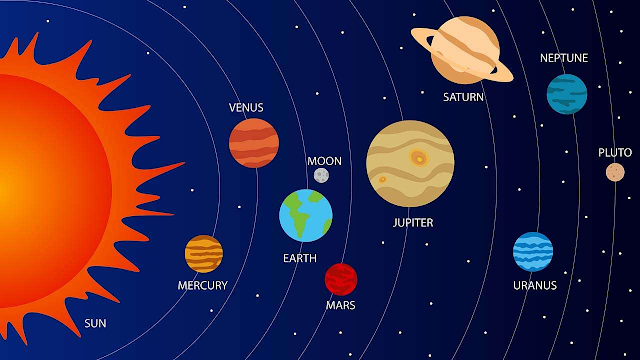For many years, Pluto held a special place in our hearts as the ninth planet in our solar system. Its small size, distant orbit, and mysterious nature captivated the imaginations of scientists and the public alike. However, in 2006, everything changed when the International Astronomical Union (IAU) made a decision that sparked controversy and forever altered our perception of this enigmatic celestial body.
The reclassification of Pluto from a planet to a "dwarf planet" was met with mixed reactions. Some embraced the scientific reasoning behind the decision, while others clung to the sentimental attachment to Pluto as a planet. To truly understand why Pluto is not considered a planet anymore, we need to explore the historical context, scientific explanations, and ongoing debate surrounding this significant change.
Historical Context
Pluto was discovered in 1930 by American astronomer Clyde Tombaugh, using photographs taken at the Lowell Observatory in Arizona. Its distant location and peculiar orbit presented a challenge in understanding its true nature. Initially, Pluto was hailed as the ninth planet of our solar system, joining the ranks of Mercury, Venus, Earth, Mars, Jupiter, Saturn, Uranus, and Neptune.
As scientific knowledge and technology advanced, our understanding of the solar system expanded. Astronomers began to discover other celestial bodies in the outer reaches of the solar system, leading to the realization that Pluto was not alone in its region. In the 1990s and early 2000s, the discovery of numerous icy objects in the Kuiper Belt beyond Neptune's orbit raised questions about Pluto's classification.
Why Pluto is Not a Planet
The 2006 decision by the International Astronomical Union (IAU)
In August 2006, the International Astronomical Union (IAU) made a significant decision regarding the definition and classification of planets. Prior to this decision, there was no official and universally accepted definition of what constituted a planet. The IAU, as the authoritative body responsible for astronomical nomenclature, convened to establish a clear set of criteria that would define the characteristics necessary for an object to be classified as a planet.
The criteria for planetary classification
The IAU's criteria for planetary classification were designed to provide a consistent and scientific definition of a planet. According to their guidelines, a celestial body must meet three specific criteria to be considered a planet:
- It must orbit the Sun: A planet must revolve around the Sun in an elliptical or nearly circular path. This criterion distinguishes planets from other celestial bodies that do not orbit a star.
- It must be spherical in shape: The force of its own gravity should shape the object into a nearly round or spherical form. Gravity acts as a force that pulls matter inward, causing celestial bodies to assume a spherical shape.
- It must have cleared its orbit of other debris: This criterion is particularly important and sets planets apart from other objects in their vicinity. A planet should have enough gravitational influence to clear its orbit of smaller objects, such as asteroids and debris, as it orbits the Sun.
The reclassification of Pluto as a "dwarf planet"
Upon careful examination of Pluto's characteristics, particularly in light of the third criterion outlined by the IAU, it became evident that Pluto did not meet the requirements to be classified as a planet. While it satisfied the first two criteria of orbiting the Sun and having a spherical shape, Pluto's failure to clear its orbit of other debris led to its reclassification as a "dwarf planet." This new category was created to acknowledge celestial bodies that share similarities with planets but do not fully meet the criteria for planetary status.
Scientific justifications for the decision
The decision to reclassify Pluto was not arbitrary; it was based on scientific observations and a need for consistency in classifying objects in the solar system. One of the primary motivations behind the reclassification was to establish a clear and unambiguous definition of a planet. The IAU aimed to provide a framework that would aid scientists in identifying and categorizing celestial bodies accurately.
Pluto's location in the Kuiper Belt, a region beyond Neptune populated by numerous icy objects, was a significant factor in its reclassification. Scientists discovered that Pluto shares more similarities with other objects in the Kuiper Belt than with the traditional planets of the inner solar system. It became apparent that classifying Pluto as a planet would be inconsistent with the growing understanding of the solar system's composition and dynamics.
Additionally, the IAU recognized the need to differentiate between planets and other celestial bodies to facilitate research and exploration. By establishing clear criteria, scientists can better study and categorize the diverse objects within our solar system, leading to a deeper understanding of its formation and evolution.
The reclassification of Pluto as a dwarf planet opened up new avenues of scientific inquiry and sparked further exploration of the Kuiper Belt. It allowed scientists to focus on studying the unique characteristics and interactions of these dwarf planets, enhancing our understanding of the outer regions of the solar system.
The decision to reclassify Pluto was a result of the IAU's effort to define planets more precisely and consistently. By establishing clear criteria for planetary classification, including the requirement to clear its orbit of debris, Pluto's unique characteristics led to its reclassification as a dwarf planet. This decision aligns with our evolving understanding of the solar system and paves the way for further discoveries and advancements in the field of astronomy.
Scientific Explanations
Pluto's orbit and its interaction with Neptune
Pluto's elliptical orbit brings it closer to the Sun than Neptune during certain periods, resulting in their orbits crossing. This gravitational interaction between the two objects further highlights the need to differentiate between Pluto and traditional planets. Unlike planets such as Earth or Mars, which have stable orbits relatively unaffected by other massive bodies, Pluto's orbit is influenced by the gravitational pull of Neptune, making it more similar to other Kuiper Belt objects.
The discovery of other similar objects in the Kuiper Belt
The exploration of the Kuiper Belt, a region beyond Neptune consisting of icy objects, has revealed the presence of numerous small celestial bodies similar to Pluto. These discoveries have expanded our understanding of the outer solar system and challenged the traditional classification of planets. It became evident that Pluto was just one of many similar objects in this region and did not possess the characteristics necessary to be classified as a planet.
Characteristics that differentiate Pluto from traditional planets
Pluto's size, composition, and orbital characteristics set it apart from the traditional planets in our solar system. With a diameter of approximately 2,377 kilometers, Pluto is smaller than Earth's Moon and several other moons in the solar system. Its composition, primarily composed of rock and ice, is more akin to the icy bodies found in the outer regions of the solar system. Furthermore, its elongated and inclined orbit, coupled with the presence of other objects in its vicinity, distinguish Pluto from the more circular and cleared orbits of traditional planets.
Ongoing Debate and Implications
Perspectives on the reclassification
The reclassification of Pluto continues to generate debate among scientists, educators, and the general public. Some argue that the IAU's decision provides a clearer understanding of planetary classification, as it sets specific criteria that define the properties and behavior of planets. They believe that this decision contributes to a more precise representation of the solar system's composition. However, others maintain a sentimental attachment to Pluto as a planet and feel that its reclassification diminishes its historical significance and uniqueness.
Impact on astronomical research and education
The reclassification of Pluto has influenced astronomical research and education. Scientists now focus on studying the complexities of the solar system, including the diverse range of celestial objects that fall under the category of dwarf planets. This expanded understanding enhances our knowledge of the solar system's formation and evolution and provides valuable insights into the dynamics of the Kuiper Belt.
Public perception and the enduring fascination with Pluto
Despite the change in classification, Pluto remains an object of fascination and intrigue. Its captivating history, unique characteristics, and ongoing exploration efforts by space agencies continue to captivate the public's imagination. The public's curiosity about Pluto and its reclassification presents an opportunity for science communicators to engage and educate, highlighting the dynamic nature of scientific understanding and the ongoing discoveries in the outer reaches of our solar system.
Conclusion
While the reclassification of Pluto as a dwarf planet may have initially been met with resistance, its acceptance has grown as scientists and the public recognize the scientific reasoning behind the decision. Understanding the distinct nature of Pluto allows us to appreciate the complexity and diversity of our solar system. It provides a more accurate representation of the celestial bodies that reside within it and contributes to our evolving understanding of the cosmos.
Pluto's reclassification serves as a reminder of the ever-evolving nature of scientific knowledge. It highlights the importance of ongoing exploration and scientific inquiry to deepen our understanding of the universe and the celestial bodies that reside within it. By embracing new discoveries and adjusting our understanding accordingly, we pave the way for further advancements in our knowledge of the cosmos and our place within it








0 Comments